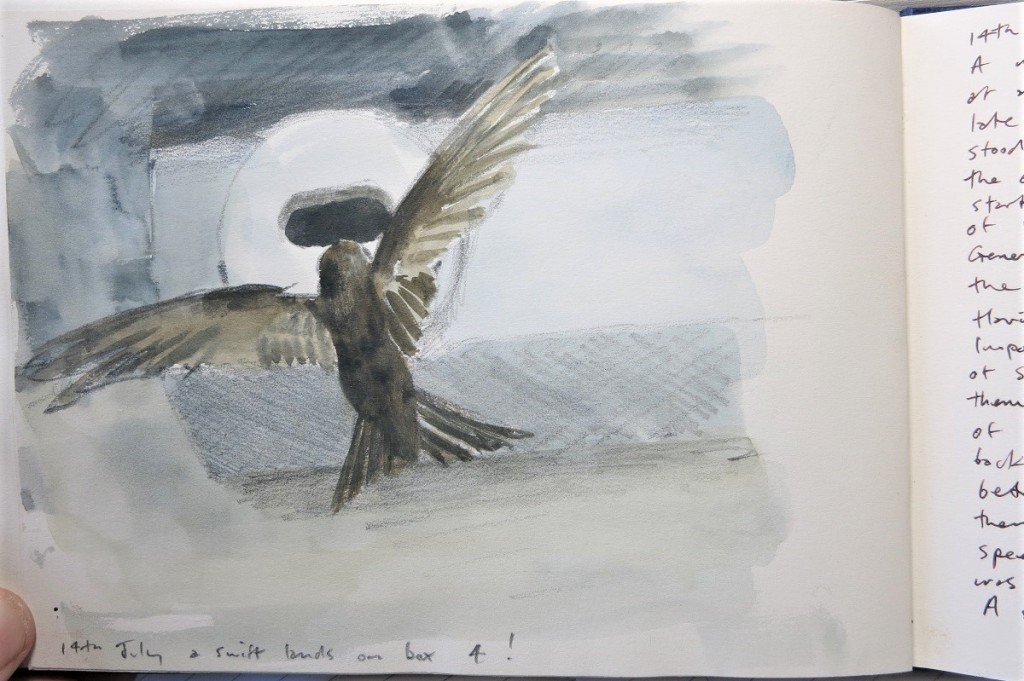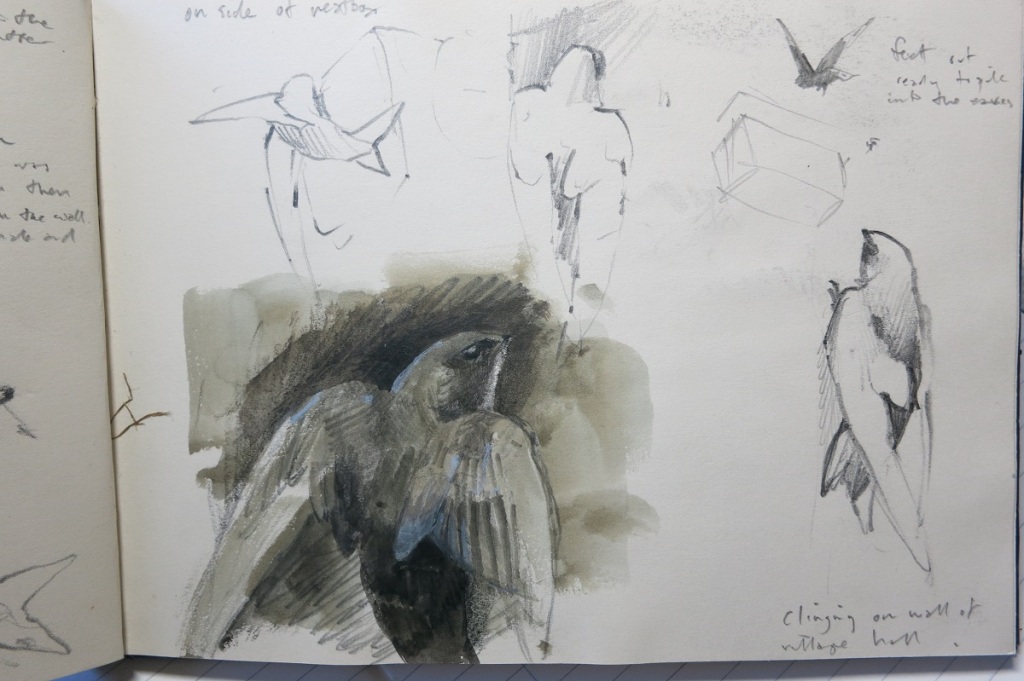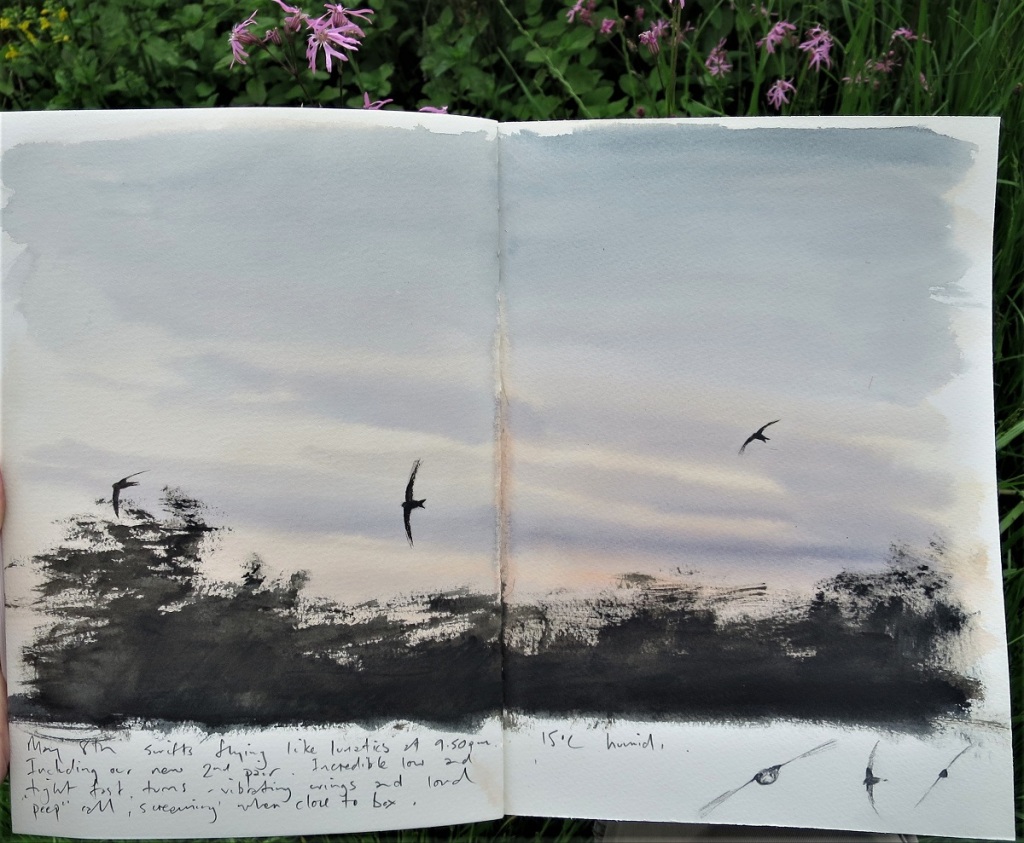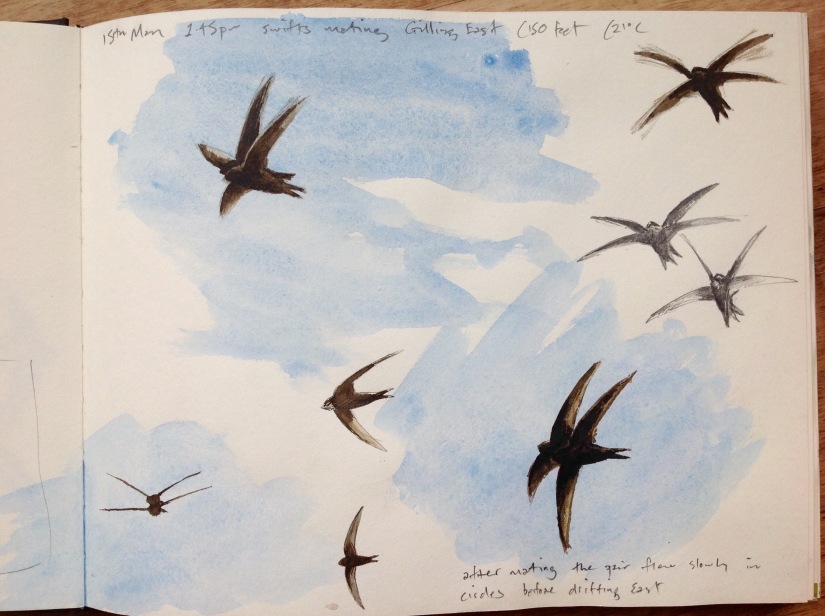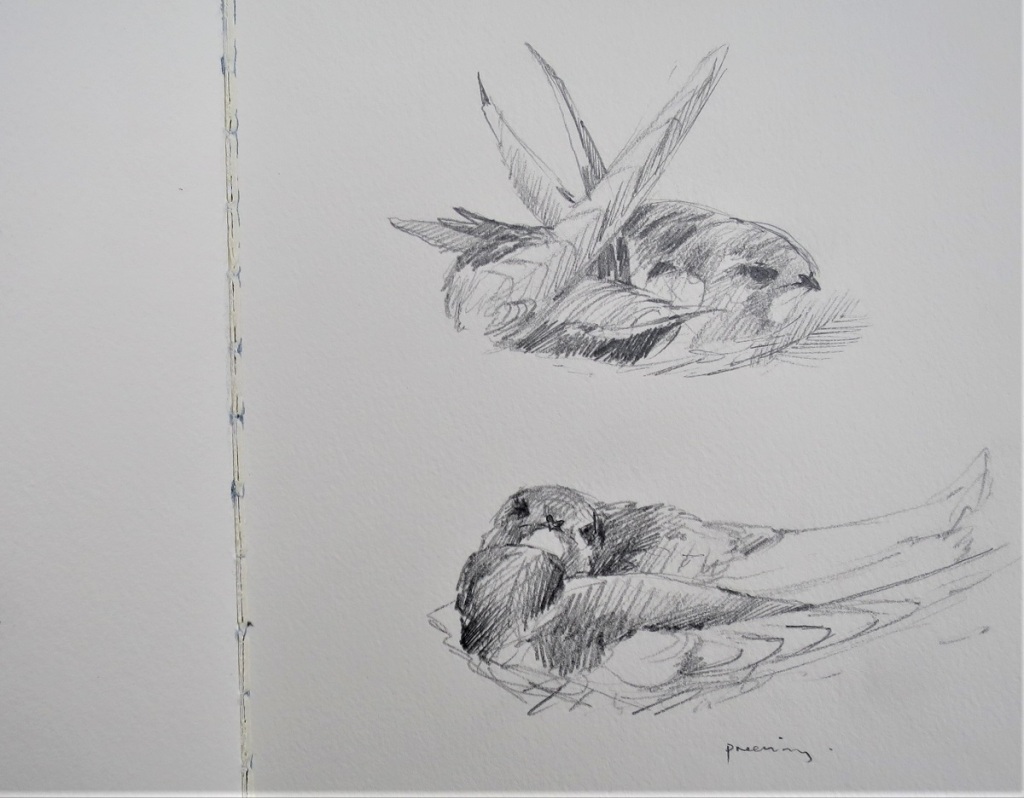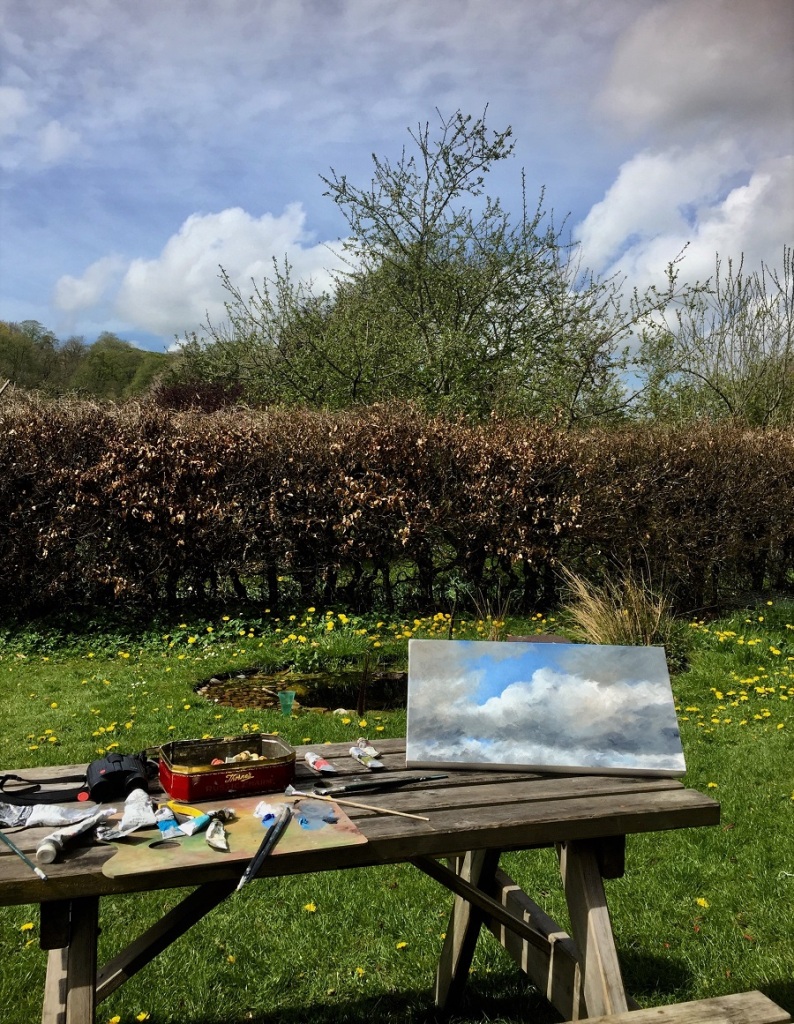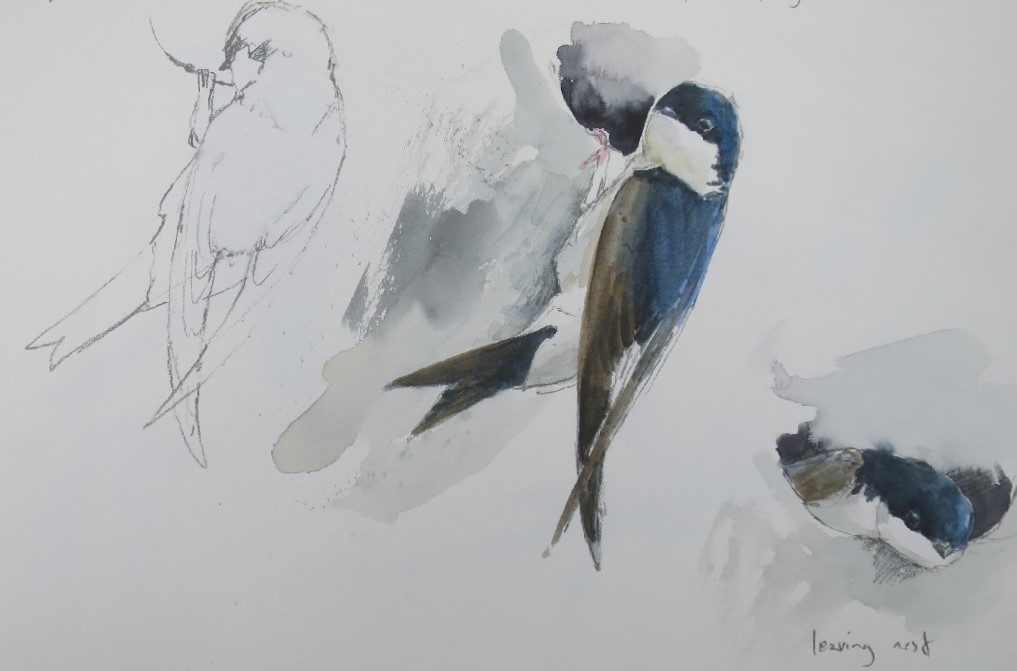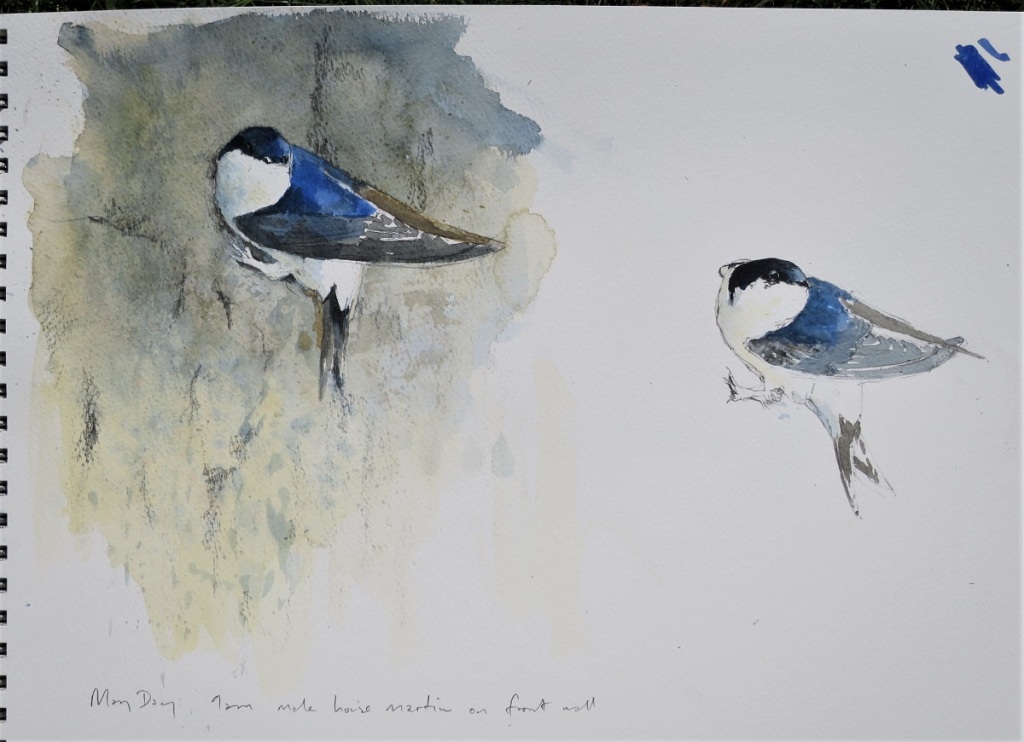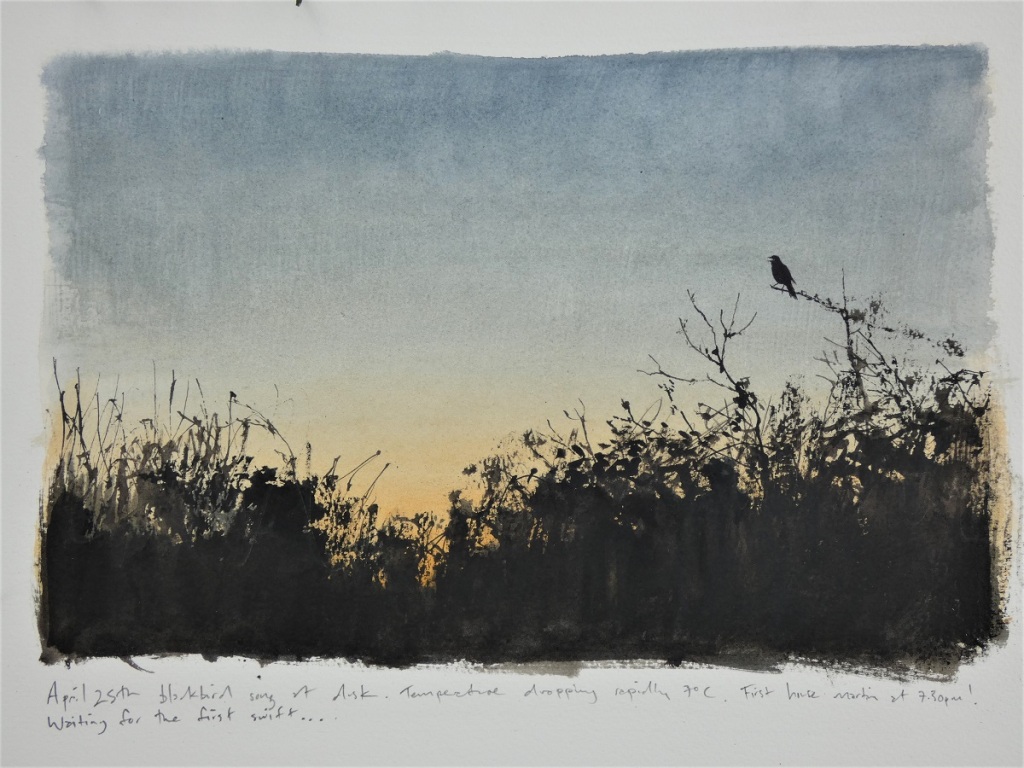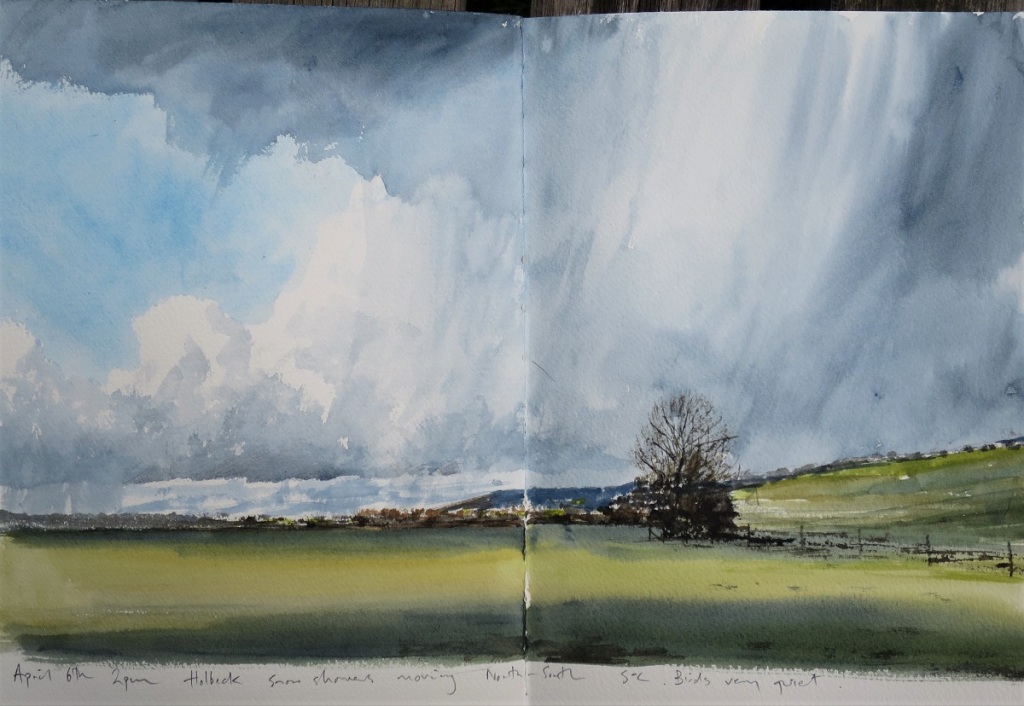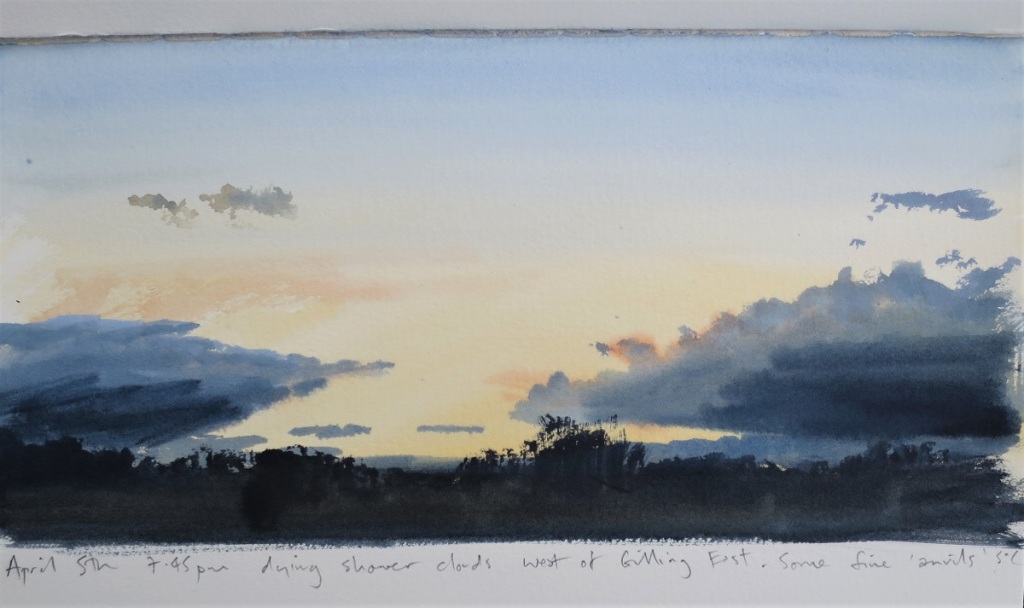We moved to Gilling East, North Yorkshire in 2017. The village previously had a maximum of c5 pairs when we moved here, the nearest from our house c150m away in the village hall. By 2019 they were breeding. We have attracted swifts to three houses now. The first was in 2003 in Wiltshire- remarkably one of my plywood nest boxes there is still being used by swifts! I used an old Sony cassette player on the ground below the boxes to attract them there- it took just two years.
Gilling East swifts- a brief summary
2017 first summer living in Gilling East, calls played, fairly typical chaotic prospecting by three birds on just two days in late July.
2018 June- some much more serious prospecting this year with landing on boxes and brief entering of boxes.
July 23rd first bird in box 1 for a substantial amount of time but not roosting.
July 25th pair in box 1 but not roosting.
2019 pair return to box 1 late May and breed, fledging young in late August. No new pairs attracted but plenty of prospecting and single swifts occasionally entering other boxes.
2020 pair return to box 1, normal breeding time. Plenty of prospecting but only one or two very brief entries to other boxes all season. No new non- breeding pairs attracted into boxes.
2021 first pair box 1 arrive in mid-May now incubating, soon to hatch. New pair attracted to box 2 on 9th June ,roosting every night since. Hopefully they will build a nest, possibly breed late.
Bangers
I have long thought that ‘bangers’ as a description of swift behaviour should be more specific. After countless observations I see two distinct types of ‘banging’.
The first type is often most noticeable earlier in the season (from end of May) when the younger non breeders are not here, but happens throughout. They are probably older non breeders, more experienced at approach and landing. They aim at a breeders’ box and perch first time and perch long enough to invite a response from them, often screaming into their nest box. I am almost certain that my new pair did this to the breeders a couple of days before they moved in. They repeatedly land on the breeders’ box, in my case the only breeding pair on the house. They could clearly land on any box but choose the breeders’ box. Why, curiosity, or perhaps they are already fellow members of the colony so perhaps this banging is an extension of social aerial activity??
The type most often referred to as ‘banging’ is more random and involves touching or landing on multiple boxes or below them, under gutters etc. In my view many of these birds will not be persuaded to enter that year because they are simply not mature enough. They appear to be practicing approach and landing. Swifts although amazing fliers have to learn manoeuvres in tight spaces. If you watch them you can see they try different approach angles. Eventually more experienced birds learn the most efficient flight path.
Much of the swift behaviour we watch (and many get frustrated by) will not lead to finding a nest site that season because they are not mature enough to feel the urge to do so. Can we even prove that this behaviour is prospecting for nest sites or could it be something else? Many of these birds will be too young to breed or even think about breeding and perhaps they are practicing approach and landing rather than looking for a specific site? Or perhaps it is largely a social activity? A swift’s eyesight is incredibly sharp so it is inconceivable that they do not see the entrance to a nest box.
When swifts do become sexually mature the ‘switch’ is flicked and they may suddenly enter nest boxes confidently and rapidly. No amount of call playing will persuade them to do so until that ‘switch’ is flicked, however the calls have attracted them to a new potential nesting area which they will probably return to the next year. I have no doubt they see the nest box entrances, how couldn’t they, but they have to be old enough to take it further. Why they take so long to mature, we don’t know?
Solo prospectors
One more thought on nest site selection. Having started three colonies at different houses since 2003, consistently the birds to watch have been the solo prospectors. There is no doubt they select quiet times to prospect for nest sites, when the ‘bangers’ are not around. They make no calls at all. At our colony in Ampleforth one such bird was an aberrant male which silently and alone entered a nest box three short times in a season. It never roosted and didn’t attract a mate but it came straight back to breed the following spring.
Once the site is entered and selected the swift will return with a mate, again at a quiet time, sometimes even the following year. The pair will circuit fast with the lead bird showing its mate the nest site often screaming when close to the entrance. After a few fast circuits this bird will enter the site hoping the mate will follow. This can happen quickly or the mate can take many attempts to get the approach and landing right. We have just gained a second pair in the nest box next to our incubating pair. The second bird took about a day to settle with its mate in the nest box. Now they enter the box in very quick succession.
Non breeding occupants to breeding pair
I have seen two main scenarios where birds enter nest boxes then breed.
- A pair enter from June onwards and start a nest to be used the following year. They can enter for the first time a few days before most swifts leave and breed the following spring. I put a new nest box up on 20th July 2018, a pair was in on 23rd July 2018 and it was used for breeding in 2019.
- . A single bird (male?) enters a box several times in a season but doesn’t roost or attract a mate in. It returns to the box the following spring, attracts a mate and breeds that year.
For anyone currently frustrated by watching ‘banging’ without birds entering nest boxes I would say enjoy the presence of swifts in the moment. We can only speculate about the age and sex of the birds doing this and why they do it. I have watched this behaviour countless times and in some years they don’t enter a box at all. There is so much we don’t know; enjoy the experience of having these magnificent birds so close. The chances are that when that maturity ‘switch’ is flicked you will have swifts on your house.

